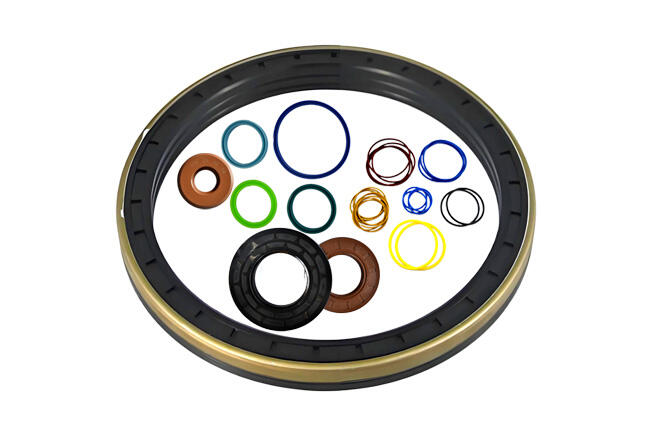In the complex and high-speed environment of modern high-speed trains, sealing components play a crucial role in ensuring the stability, safety, and comfort of the entire system. Seals are not just used to prevent leaks; they also contribute to the overall performance and longevity of key systems, such as braking, suspension, steering, and door airtightness. The demands placed on sealing components in high-speed trains are significantly more stringent compared to other mechanical systems due to the unique challenges posed by speed, vibration, temperature fluctuations, and external contamination.
Why High-Speed Trains Demand Specialized Seals
High-speed trains operate in highly demanding conditions. Unlike other machinery, the train is subjected to continuous high-speed motion, frequent vibrations, large temperature variations, and exposure to external elements such as rain, dust, and track oil. Seals need to perform consistently under these extreme conditions, ensuring that even the smallest leaks or wear do not compromise the system’s safety or performance.
Seals in high-speed trains are expected to provide:
Long-term, high-load stability
Consistent performance at high speeds
Protection from environmental factors such as humidity, dust, and chemicals
For manufacturers, distributors, and maintenance professionals, choosing the right sealing materials and designs for these applications is crucial to minimizing operational downtime and maintenance costs.
Key Performance Requirements
High and Low-Temperature Resistance
High-speed trains face temperature extremes. For instance, the braking system and bearings can reach temperatures exceeding 150°C, while the undercarriage can drop to -40°C during winter. Seals must maintain their elasticity and sealing capacity across this broad range of temperatures without degrading.
Wear Resistance and Fatigue Endurance
With components like axles and air suspension systems, sealing parts often experience frequent friction and wear. Seals must resist abrasion from the high-speed movement and prevent wear-induced damage. Materials like PU (Polyurethane), FKM (Fluoroelastomer), and HNBR (Hydrogenated Nitrile Butadiene Rubber) are commonly used for their superior wear resistance, ensuring a longer operational life and less frequent maintenance.
Pressure Resistance and Leak Prevention
Seals must withstand the pressure of the braking system, hydraulic systems, and air suspension components, all of which operate under significant pressure. Seals that fail to maintain pressure integrity can lead to catastrophic leaks, compromising safety and functionality. To address this, many seals feature double-lip designs or metal-backed composite structures for enhanced pressure resistance.
Low Friction and Noise Reduction
High-speed trains prioritize passenger comfort, which means noise levels must be minimized. Seals with low friction coefficients reduce noise caused by components rubbing together. Using materials like PTFE (Polytetrafluoroethylene) helps ensure a smooth operation, minimizing both noise and wear.
Common Materials and Their Selection Logic
PU (Polyurethane): Known for its strength, abrasion resistance, and long lifespan, it is often used in dynamic sealing applications like pneumatic or hydraulic systems.
FKM (Fluoroelastomer): Resistant to high temperatures, fuels, and oils, ideal for braking systems and bearing seals.
HNBR (Hydrogenated Nitrile Butadiene Rubber): A versatile material with great resistance to heat, oil, and wear, offering extended service life in high-speed applications.
PTFE (Polytetrafluoroethylene): Low friction and chemically stable, ideal for dynamic and rotating parts.
Each material has its unique characteristics. For example, seals for axles and bearings require wear resistance, while seals for the braking systems prioritize heat and oil resistance. When selecting sealing materials, it's important to match the material properties to the specific operating conditions and environments of each system.

Sealing components in high-speed trains are more than just functional; they are vital to the safety and performance of the system. Whether it's maintaining high-temperature resistance, preventing leaks, or withstanding continuous wear, the right seals ensure that trains operate safely and efficiently over long distances. For buyers, the key to success lies in selecting high-quality seals that meet these rigorous performance requirements. Suppliers who can offer reliable products, technical expertise, and lifecycle management support will be invaluable partners in the high-speed rail industry.
As high-speed rail continues to evolve, so too does the demand for advanced sealing technology. The right seals not only keep trains running smoothly but also contribute to the safety and comfort of passengers worldwide.
 Hot News
Hot News